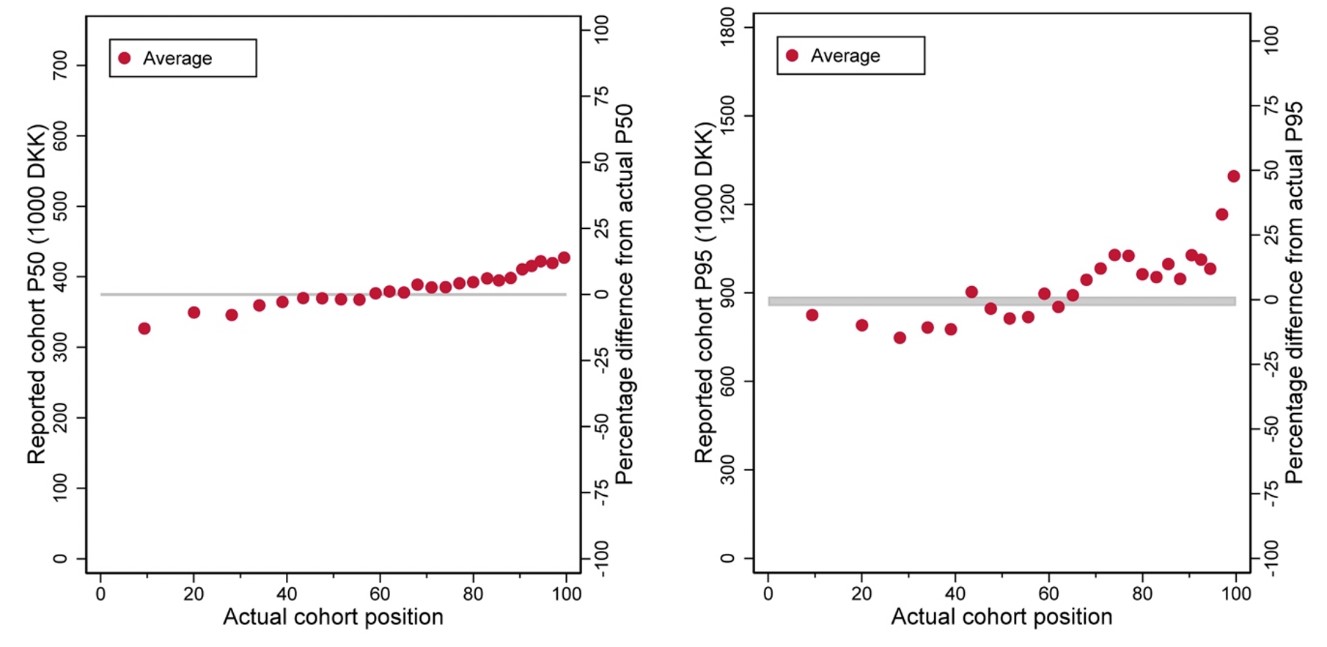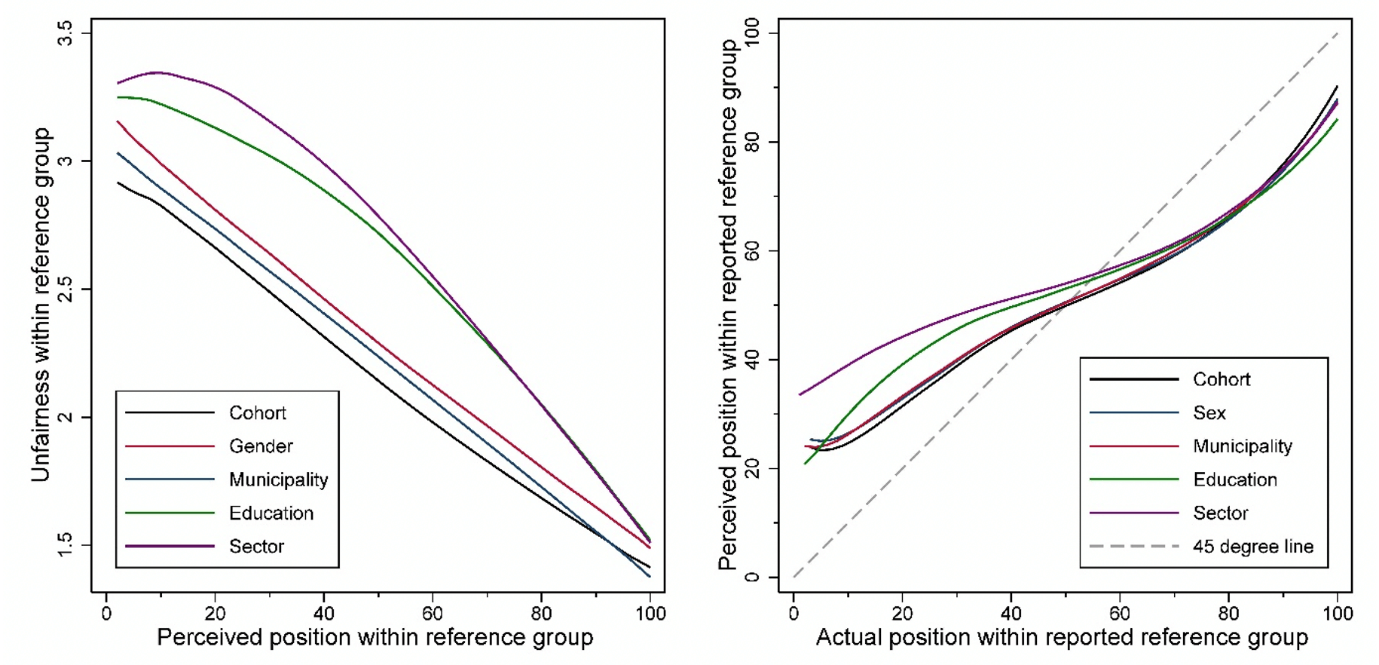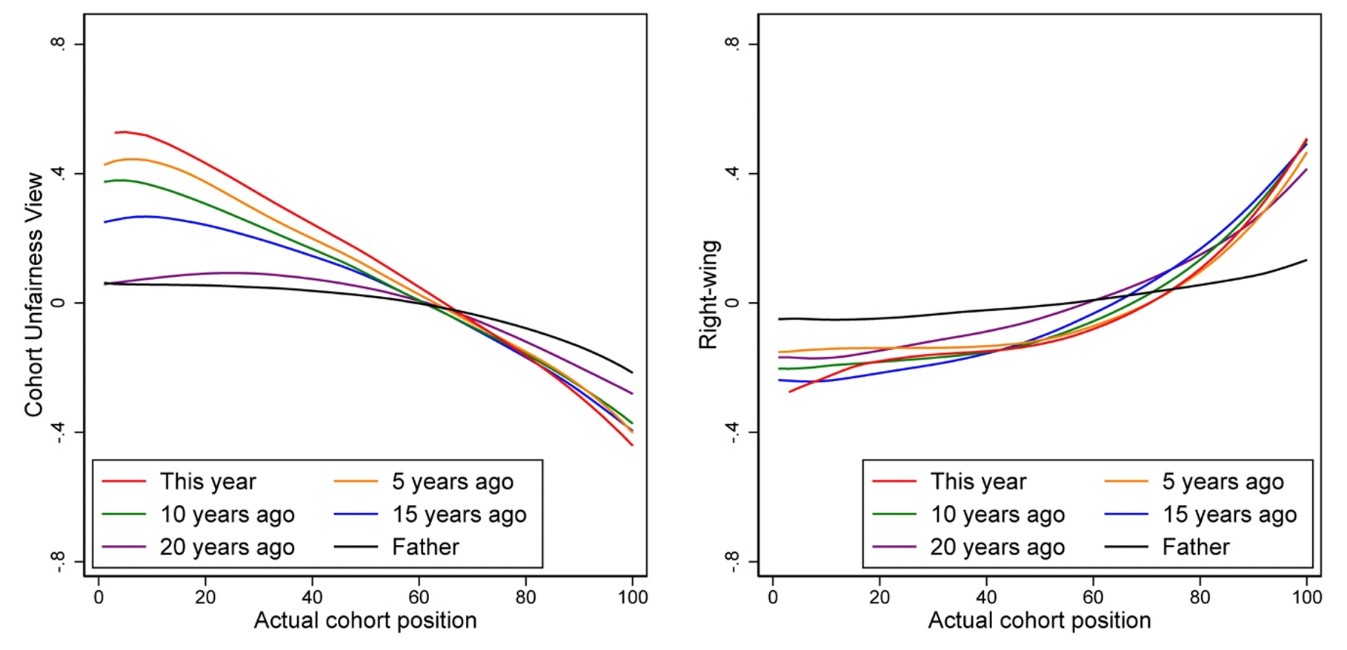How social position shapes views of fairness
Kristoffer Balle Hvidberg, Claus Thustrup Kreiner, Stefanie Stantcheva
How individuals understand their own social position – and how that understanding shapes their stance on inequality more broadly – are questions of longstanding concern to social scientists. This column uses a unique combination of data to address these questions, linking a large-scale Danish survey that elicited perceptions of income and fairness to detailed administrative data on true income positions and life histories. It finds that individuals are well informed about their own social positions, and that their beliefs about fairness and unequal outcomes correlate more closely to that position than their political views do.
People care about their social position, their consumption practices, and their income relative to others (Duesenberry 1949, Easterlin 1974 and 1995, Blanchflower and Oswald 2004). But how well do they actually understand the income of peers in their reference groups – such as people from the same cohort, those working in the same sector or firm, living in the same city or neighbourhood, or with the same level of education – and their own position relative to their peers? How do they view the (un)fairness of inequality within these different reference groups, and to what extent do their views on the fairness of inequality depend on their own social position within these groups?
A budding recent literature addresses important questions on inequality and people’s views on fairness by combining subjective information from surveys with objective information from administrative records (Almås et al. 2017, Karadja et al. 2017, Epper et al. 2020). This combination of subjective and objective information is a promising avenue to learn more about the determinants of perceptions and attitudes.
In a recent project (Hvidberg et al. 2020), we exploit a unique combination of data, linking a large-scale online survey – in which we elicited perceptions on income positions and fairness views for a large, representative sample of prime-age people in Denmark – to detailed administrative data on people’s true income positions within several reference groups, income histories, and life events. We investigate how well people know their social position relative to others of the same age, same sex, living in the same municipality, with a similar level of education, and working in the same sector. We even considered fine-grained groups such as one’s immediate neighbours, coworkers in the same firm, former classmates, or the positions of one’s parents in the parental income distribution. We then study how peoples’ actual and perceived positions relative to others affect their views on the fairness of income inequality within the same groups. We can do this in several ways: by experimentally showing people their true position; by analysing changes in social position over the life course; and by quasi-experimentally exploiting variation due to shocks (unemployment, hospitalisation, disability, or promotions).
The analysis of the linked survey and background data reveals two important findings.
The first main finding is that people are reasonably well informed about social positions. They systematically believe the income levels of others are closer to their own income level than they really are, but misperceptions are generally not large. We ask people what they think the median income level (P50) and 95th percentile income level (P95) are for other people born in the same year, and find a systematic increasing relationship between the levels people report and their own position. This means that higher-income people tend to over-perceive both the P50 and P95 income, and lower-income people tend to under perceive it. Yet, except for respondents in the very top and the very bottom of the distribution, the average prediction errors are within 5% of the median value and within 10% of the P95 value. By contrast, those in the very top of the distribution starkly overestimate the P95, by 50% (see Figure 1).
Figure 1 Perceptions of income distribution

We also ask people what they think P50 and P95 are for people in their reference groups – for example, what do women think that the P50 income is for women, or what do people working in the construction sector think the P50 income is in the construction sector? Again, we find that people are well aware of the P50 of their various reference groups. They are also well aware of the P95 level within their cohort, gender, and municipality, but they systematically underestimate the P95 of their education group and, in particular, underestimate P95 in the sector where they work. In this dimension, the respondents are not aware of the degree of inequality within their education groups and within their sectors.
The second main finding is that fairness views on inequality strongly depend on the current social position of individuals: Those who believe they are ranked higher in a cohort find inequality within that cohort to be less unfair and, similarly, those ranked higher within each reference group systematically find differences in income within that group to be less unfair. When we compare fairness views across reference groups, we find that compared to the cohort, gender, and municipality groups, income inequalities within education and sector are considered considerably more unfair at all positions in the distribution (left panel of Figure 3). Yet, it is exactly for these reference groups that respondents underestimate the degree of inequality most, and within which lower-income people strongly overestimate their own positions (right panel of Figure 3).
Figure 2 perceived position within reference groups and relationship to fairness views

We also investigate how fairness views on inequality depend on the historical social positions of individuals and find that the association between fairness views today and historical social positions become weaker and weaker when going backwards in time from today to twenty years ago. Going further back, the social position of an individual’s father, measured when the individual was 15 years old, is almost unrelated to the individual’s fairness view today (see the left panel of Figure 3). Furthermore, we study movements up or down in social positions over one’s lifetime, including movement caused by shocks such as unemployment or hospitalisation. Respondents who experienced a negative social-position shock are more likely to see inequality as unfair, while those who experienced a promotion are less likely to do so.
We also informed a random half of the sample about their true social positions before asking them questions about their views on fairness, effort versus luck, and political attitudes. Those who overestimated their position and thought they were ranked higher than they truly are switch to thinking that inequality is less fair after being told their true (lower) position; the opposite happens for those who underestimated their social position.
Does the pattern hold if we look at political views instead? Our results show it does not. Political views are not as strongly correlated with current social position as are views on fairness; additionally, the relationship between current political views and social position going back in time is much more stable (see the right panel of Figure 3). This suggests that political views are stickier and do not move with changes in social position to the same extent as do views of fairness. Results from the analysis of experimental and quasi-experimental variation in social position confirm that people’s views of fairness move strongly together with their social position, while political views are stickier.
Figure 3 Fairness views and political attitudes by historical position of respondents

Concluding remarks
The results answer our questions in the opening paragraph. On average, individuals are well aware of their social positions, and those positions are important for their views on fairness and inequality. Moving up the social ladder makes people more tolerant of inequality, while moving down makes them less tolerant of inequality. By contrast, political views are more stable. Respondents perceive inequality to be most unfair among people with the same education level and working in the same sector. These are also the reference groups in which lower-income people overestimate their position the most and within which respondents in general underestimate inequality most.
You can read more about the research in the NBER working paper here
References
Almås, I, A W Cappelen, K G Salvanes, E Ø Sørensen and B Tungodden (2017), “Fairness and family background”, Politics, Philosophy & Economics 16(2): 117–131.
Blanchflower, D G and A J Oswald (2004), “Well-being Over Time in Britain and the USA”, Journal of Public Economics 88 (7-8): 1359–1386.
Duesenberry, J (1949), Income, saving, and the theory of consumer behavior, Harvard University Press, Economic studies: No. 87.
Easterlin, R A (1974), “Does economic growth improve the human lot? Some empirical evidence”, Nations and households in economic growth, Academic Press: 89–125.
Easterlin, R A (1995), “Will raising the incomes of all increase the happiness of all?”, Journal of Economic Behavior & Organization 27(1): 35–47.
Epper, T, E Fehr, H Fehr-Duda, C T Kreiner, D D Lassen, S Leth-Petersen and G N Rasmussen (2020), “Time discounting and wealth inequality”, American Economic Review 110(4): 1177–1205.
Hvidberg, K B, C Kreiner and S Stantcheva (2020), “Social Position and Fairness Views”, NBER Working Paper No. 28099.
Karadja, M, J Mollerstrom and D Seim (2017), “Richer (and holier) than thou? The effect of relative income improvements on demand for redistribution”, Review of Economics and Statistics 99(2): 201–212.
